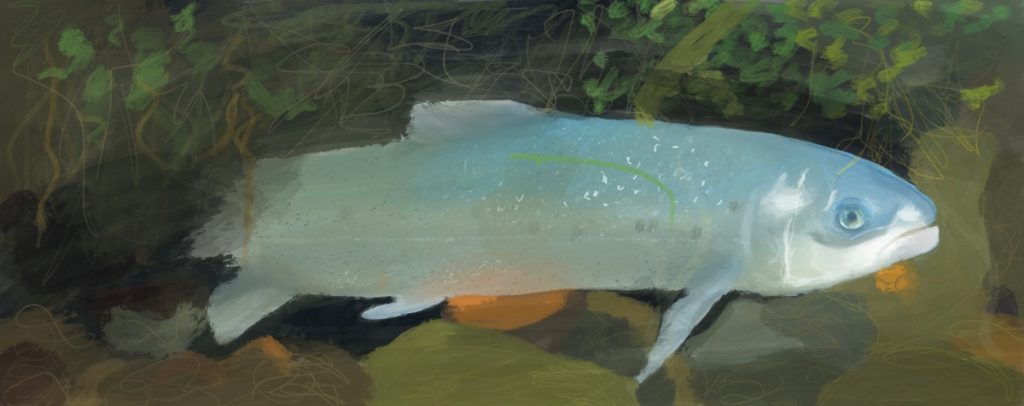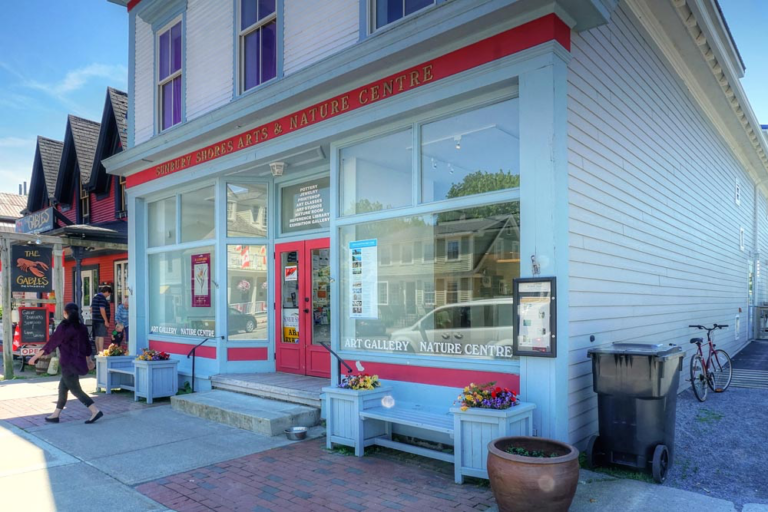Since the late 1990s, Atlantic Salmon has been in a state of crisis. The year 2019 is thought to have produced the lowest salmon returns since recordings began.
Tommi Linnansaari is a professor at UNB and holds the chair of Atlantic Salmon Research. His current research focuses on why salmon returns have been especially low in recent years.
Linnansaari says understanding the reasons for low salmon returns is complicated because of the numerous possibilities and the different challenges facing each salmon population.
Salmon spawn in gravel beds in the upper reaches of rivers. Upon being born, they make their journey to the ocean. The lucky survivors eventually return to the same location, often to within metres of where they were born, to repeat the cycle.
Each river and marine environment pose unique challenges for the salmon which inhabit them.
For example, says Linnansaari, salmon in the Saint John River have a difficult time with dams and water turbines. “The Mactaquac Dam is basically a water slide. The salmon is likely dazed and confused which makes it an easy target for predatory birds.”
In the Miramichi River, salmon experience a greater predatory threat head on. “Populations of seals and striped bass, which are known predators of salmon, are extremely high,” says Linnansaari.
Climate change is also thought to be a factor. Salmon are fond of cold water and rising temperatures are likely to affect their ability to survive.
These factors, among others, are all thought to contribute to the dangerously low salmon populations of present day. “It is a death by a thousand cuts. The salmon would likely be able to deal with one of these factors, but the combination is too much to handle,” says Linnansaari.
To exacerbate the problem, salmon populations have an inverse density dependent relationship. This means that as the salmon population decreases, the rate of decrease speeds up.
“Low populations result in the salmon being easier targets for predators which further reduces their ability to survive.”
Linnansaari fears we may have reached a “point of no return” for Atlantic Salmon populations.
In response to this situation, Linannsaari’s first order of business is discovering what factors are actually contributing the most to salmon decline.
A current solution is preventing forest cutting within a certain distance from rivers in New Brunswick. This “buffer zone” helps keep nutrients in the surrounding soil and also helps keep rivers cold.
The complication is that “certain areas are much more sensitive than others. A 10-metre buffer may be sufficient in some areas while others may require a 100-metre buffer for the same effect.”
Research is currently underway to evaluate the sensitivity of river regions in New Brunswick.
Another major initiative is new salmon tracking technology, which should be available in the upcoming year.
Linnansaari and his researchers will be able to tag salmon with specialized tags that let researchers know if the salmon is alive and, if not, if the salmon died naturally or was eaten by a predator.
Knowing how many salmon are killed by predators will allow Linnansaari to make recommendations to the government about how predator populations should be controlled. For example, they could do this by allowing Indigenous communities to harvest seals in order to reduce their numbers.
“Salmon have always been culturally, socially, and economically important in this province. We have a responsibility to preserve them.”




